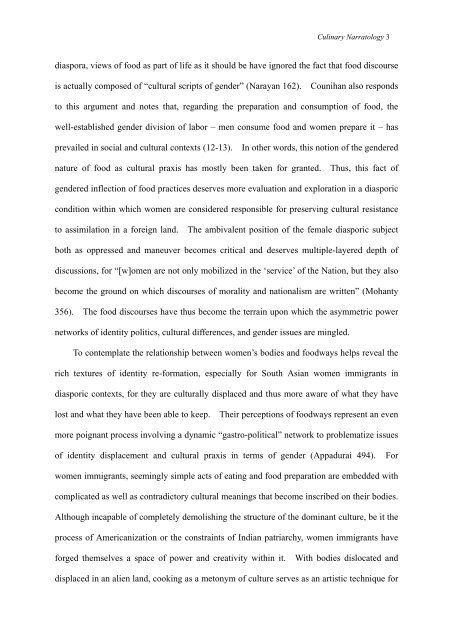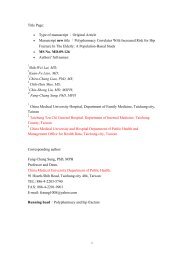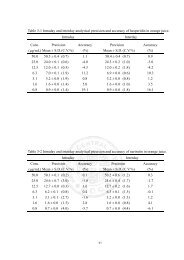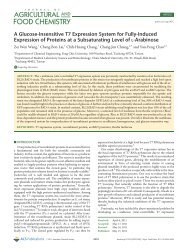Culinary Narratology in Everyday Life: Foodways and Identity ...
Culinary Narratology in Everyday Life: Foodways and Identity ...
Culinary Narratology in Everyday Life: Foodways and Identity ...
You also want an ePaper? Increase the reach of your titles
YUMPU automatically turns print PDFs into web optimized ePapers that Google loves.
<strong>Cul<strong>in</strong>ary</strong> <strong>Narratology</strong> 3<br />
diaspora, views of food as part of life as it should be have ignored the fact that food discourse<br />
is actually composed of “cultural scripts of gender” (Narayan 162). Counihan also responds<br />
to this argument <strong>and</strong> notes that, regard<strong>in</strong>g the preparation <strong>and</strong> consumption of food, the<br />
well-established gender division of labor – men consume food <strong>and</strong> women prepare it – has<br />
prevailed <strong>in</strong> social <strong>and</strong> cultural contexts (12-13). In other words, this notion of the gendered<br />
nature of food as cultural praxis has mostly been taken for granted. Thus, this fact of<br />
gendered <strong>in</strong>flection of food practices deserves more evaluation <strong>and</strong> exploration <strong>in</strong> a diasporic<br />
condition with<strong>in</strong> which women are considered responsible for preserv<strong>in</strong>g cultural resistance<br />
to assimilation <strong>in</strong> a foreign l<strong>and</strong>. The ambivalent position of the female diasporic subject<br />
both as oppressed <strong>and</strong> maneuver becomes critical <strong>and</strong> deserves multiple-layered depth of<br />
discussions, for “[w]omen are not only mobilized <strong>in</strong> the ‘service’ of the Nation, but they also<br />
become the ground on which discourses of morality <strong>and</strong> nationalism are written” (Mohanty<br />
356). The food discourses have thus become the terra<strong>in</strong> upon which the asymmetric power<br />
networks of identity politics, cultural differences, <strong>and</strong> gender issues are m<strong>in</strong>gled.<br />
To contemplate the relationship between women’s bodies <strong>and</strong> foodways helps reveal the<br />
rich textures of identity re-formation, especially for South Asian women immigrants <strong>in</strong><br />
diasporic contexts, for they are culturally displaced <strong>and</strong> thus more aware of what they have<br />
lost <strong>and</strong> what they have been able to keep. Their perceptions of foodways represent an even<br />
more poignant process <strong>in</strong>volv<strong>in</strong>g a dynamic “gastro-political” network to problematize issues<br />
of identity displacement <strong>and</strong> cultural praxis <strong>in</strong> terms of gender (Appadurai 494). For<br />
women immigrants, seem<strong>in</strong>gly simple acts of eat<strong>in</strong>g <strong>and</strong> food preparation are embedded with<br />
complicated as well as contradictory cultural mean<strong>in</strong>gs that become <strong>in</strong>scribed on their bodies.<br />
Although <strong>in</strong>capable of completely demolish<strong>in</strong>g the structure of the dom<strong>in</strong>ant culture, be it the<br />
process of Americanization or the constra<strong>in</strong>ts of Indian patriarchy, women immigrants have<br />
forged themselves a space of power <strong>and</strong> creativity with<strong>in</strong> it. With bodies dislocated <strong>and</strong><br />
displaced <strong>in</strong> an alien l<strong>and</strong>, cook<strong>in</strong>g as a metonym of culture serves as an artistic technique for









